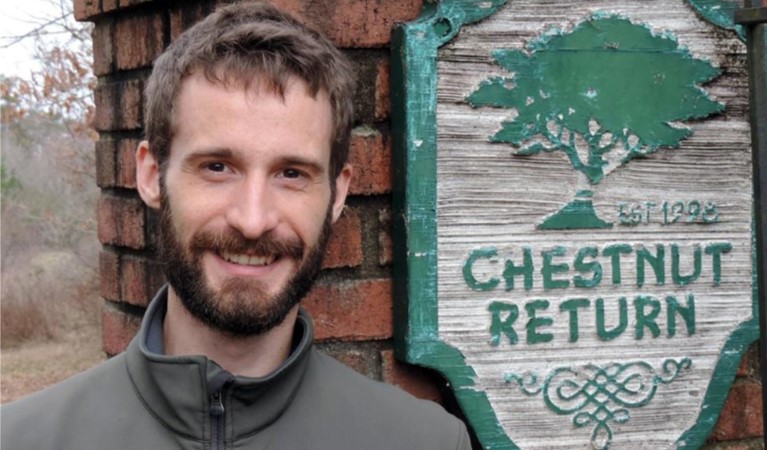
Dr. Jared Westbrook
The Environmental and Plant Biology Colloquium Series presents Dr. Jared Westbrook on “Restoration of American Chestnut: A Marriage of Breeding and Biotechnology” on Friday, Feb. 16, at 11:50 a.m. in Porter Hall 104.
Westbrook is Director of Science at The American Chestnut Foundation.
Abstract: Efforts to restore the American chestnut are approaching major milestones. Selection of the most blight-resistant backcross trees in The American Chestnut Foundation’s (TACF’s) seed orchards at Meadowview Research Farms is expected to be complete between 2020 and 2025. Progeny testing with small stem assays and genomic selection are being used to increase the speed and accuracy of selection within seed orchards. The offspring from selected parents are predicted to have blight resistance that is, on average, intermediate between American chestnut and Chinese chestnut. Meanwhile, collaborators at the State University of New York have demonstrated that transgenic American chestnut containing the oxalate oxidase (OxO) gene has blight resistance that equals that of Chinese chestnut. Preparation for federal regulatory review for the release of transgenic American chestnut is ongoing. Beyond these milestones, blight resistance in backcross populations will be improved through two additional generations intercrossing and selection. Pending regulatory approval, the transgenic founder tree will be outcrossed to pure American chestnut and backcross trees over three generations with the objectives of 1) stacking blight resistance alleles from backcross trees with OxO, 2) combining OxO with backcross resistance to Phytophthora root rot (PRR), 3) creating a restoration population with an effective population size > 500. American chestnuts will be conserved in orchards for eventual outcrossing with transgenic trees by collecting seeds and transplanting from regions that are most genetically diverse and underrepresented by TACF’s breeding program. A diversified American chestnut population in which transgenic blight resistance is combined with backcross blight and PRR resistance is expected to be available for restoration by 2050. While backcross seed from selected seed orchards and first generation transgenic progeny are expected to be available for restoration trials in the next five years, long-term commitment to continued breeding and selection is required for full-scale restoration.



















Comments